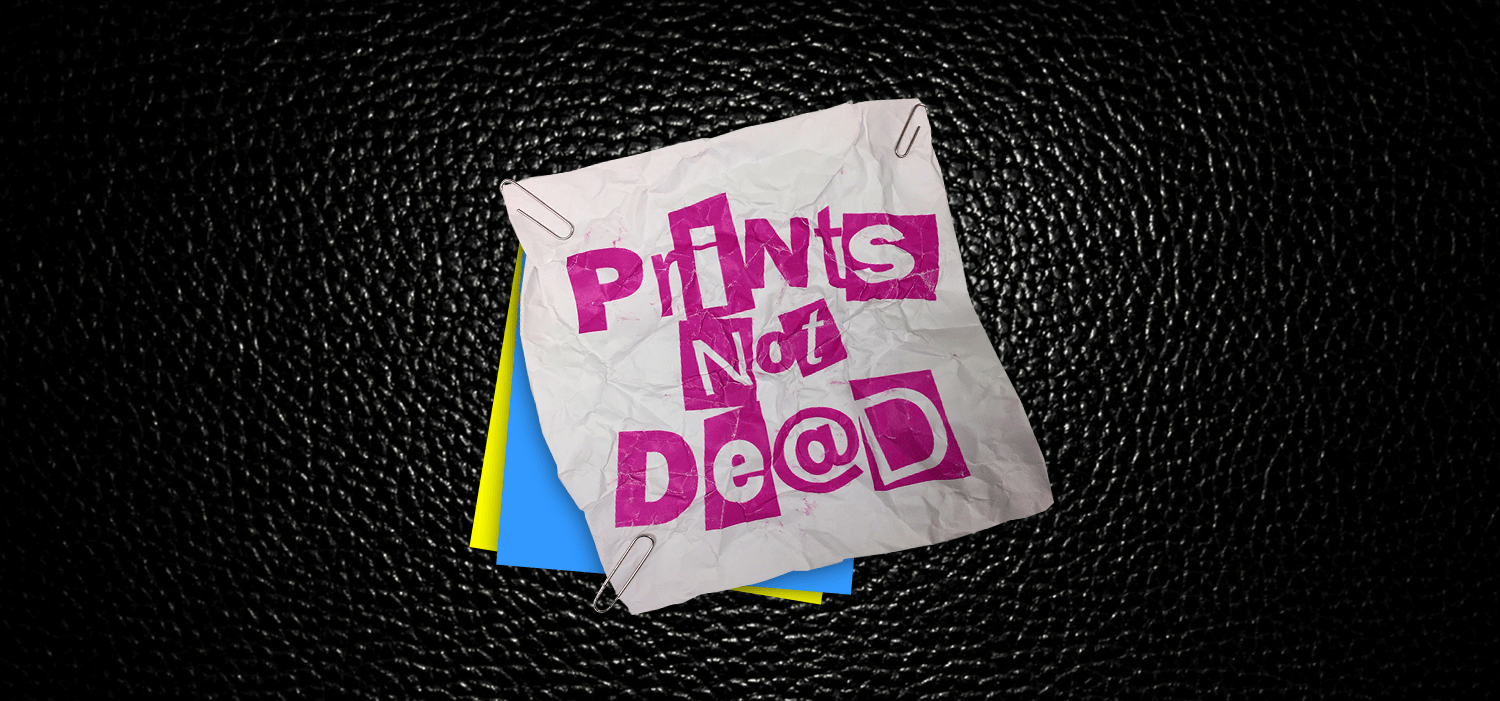Why Print Media Still Rocks On
There’s no doubt about it: we live in a digital age. Newspapers can be read online. Ads are inserted between social media posts. Commercials are commonplace on videos. It’s a smart way to reach customized eyes. Digital ads can be set to display instantly to a demographic who otherwise might never look away from their mobile devices. The nooks and crannies of the online world are stuffed with things advertisers want you to know.
But when that information is received exclusively from a screen, how well is it absorbed? The trouble is that a digital message can run the risk of being forgotten, a thing to be endured until your desired content begins to play, or just another window to close. Online ads can feel like the bugs on vacation, swarming your good time, taking bites out of your personal information before you can swat them away. Sure, all the information that companies want people to see is there, but is online advertising enough?

It comes down to convenience and aesthetic. What media can deliver a message to be read at a consumer’s leisure in an appealing format? Our old friend print. Print evokes emotion. Print puts the reader back into control of whatever lies within the layout. Eyes quickly scan a print page for something of interest, without being forced to wait or accidentally click on an ad. There are no pop ups. There is only the scent of recycled paper and ink, the tactile appeal of different stocks, and the message an advertiser wants you to remember.
The printed ad really is a multidimensional experience. As it exists in a tangible form, the printed piece doesn’t encourage interaction like digital ads, but rather requires it. The free sample of detergent. The perfume ads in fashion magazines. The free coffee coupons with convenient perforations. They are all reminders that a brand and their products are real and that they work for you, whereas by clicking ads and sharing information online can sometimes make people feel like they work for the brand. Print also reinforces the establishment of a brand. Whether it’s a postcard or a publication, it suggests a company has given a part of themselves to be retained, for those who want it, without any pressure to do so.

Magazines are shopping malls at consumer fingertips. While true that online purchases are commonplace, print ads are that physical engagement planting seeds in consumer minds. Since magazines offer a variety of entertainment and topics of interest chosen by a reader, they make prime real estate for advertisers. And people reading magazines do so at their leisure, whereas the mentality of online readership is to scroll, scroll, scroll. Printed information, even presented in a collection, is absorbed leisurely and is non-invasive. Rack cards, for example, allow customers to take information with them, be read in convenience, provide contact info, and include a web address and how to find them on social media. Simply having an online presence is not enough; the physical reminder in print hanging on a fridge may be what sends customers to a site.
Print can be the very start of an online relationship with customers. It is a point of non-invasive suggestion to choose to participate with a brand’s online presence. If your marketing goal is getting people to your website or social media pages, print can include a point of interaction with the use of scannable codes which bring customers to an online destination. No matter the brand, print, when combined with web, is a mighty campaign tool.
Another advantage to print is the delivery of content to customers without distraction. The looming expectation of annoyances, such as having to close popup ads, can inhibit reading comprehension, or participation altogether. Readers of print are more likely to absorb headlines, imagery and content without distraction. In a printed format, readers can recall features to return to an article or an ad, even amongst competing content. No clicking through links to get to a page, no scrolling, no need to charge a battery, no data usage, no collection of info, no worries.

So while web marketing provides a concise go-to collection of information, it can greatly benefit from the multi-sensory experience of print in order to forge a relationship. From the quality of a paper stock between your fingers, to the vivid Pantones in an ad, to the attractive layout of a magazine spread, the convenience and experience of print is a vital tool to be considered when building your brand both on and offline.


